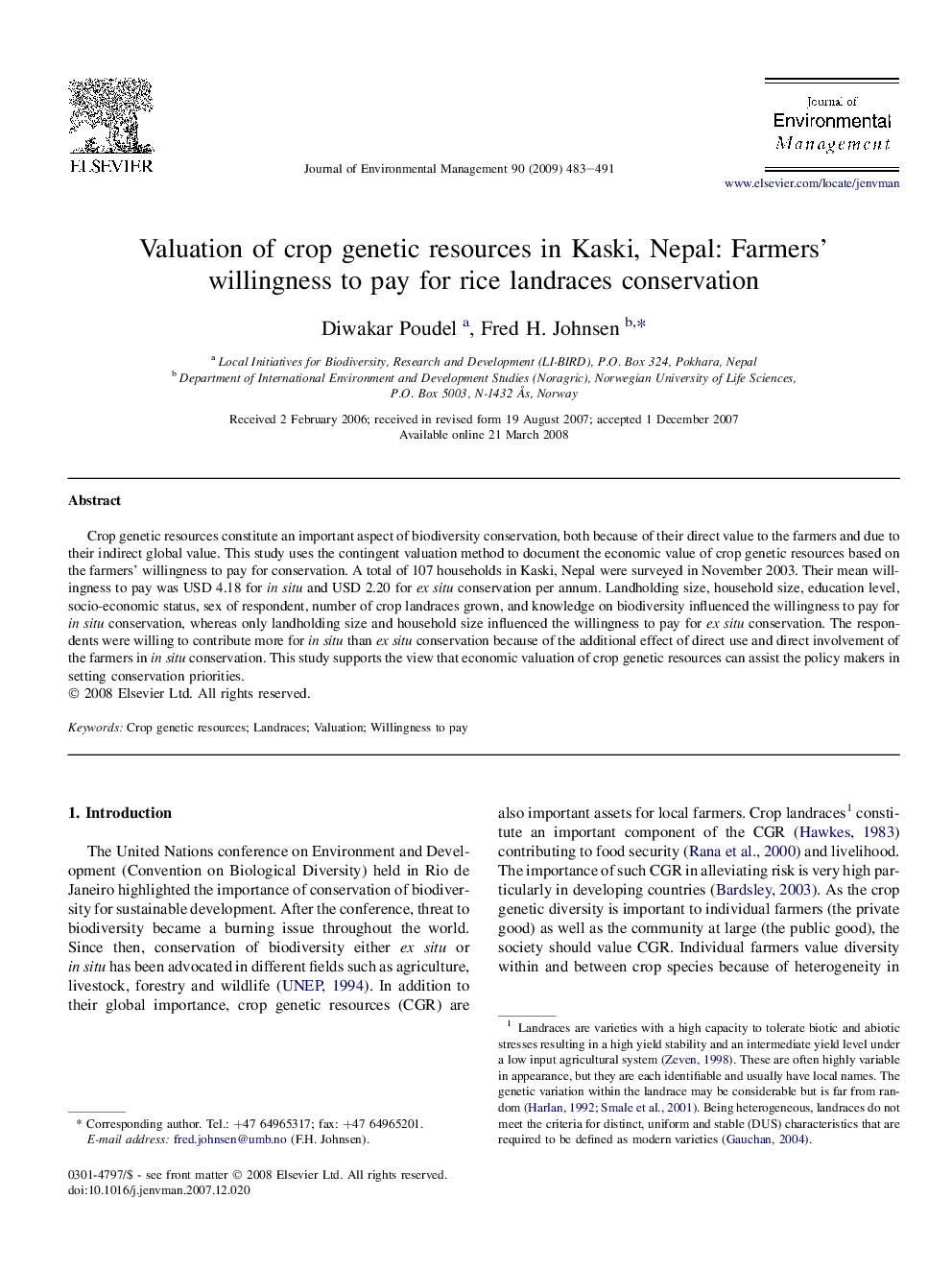| Article ID | Journal | Published Year | Pages | File Type |
|---|---|---|---|---|
| 1058115 | Journal of Environmental Management | 2009 | 9 Pages |
Crop genetic resources constitute an important aspect of biodiversity conservation, both because of their direct value to the farmers and due to their indirect global value. This study uses the contingent valuation method to document the economic value of crop genetic resources based on the farmers' willingness to pay for conservation. A total of 107 households in Kaski, Nepal were surveyed in November 2003. Their mean willingness to pay was USD 4.18 for in situ and USD 2.20 for ex situ conservation per annum. Landholding size, household size, education level, socio-economic status, sex of respondent, number of crop landraces grown, and knowledge on biodiversity influenced the willingness to pay for in situ conservation, whereas only landholding size and household size influenced the willingness to pay for ex situ conservation. The respondents were willing to contribute more for in situ than ex situ conservation because of the additional effect of direct use and direct involvement of the farmers in in situ conservation. This study supports the view that economic valuation of crop genetic resources can assist the policy makers in setting conservation priorities.
